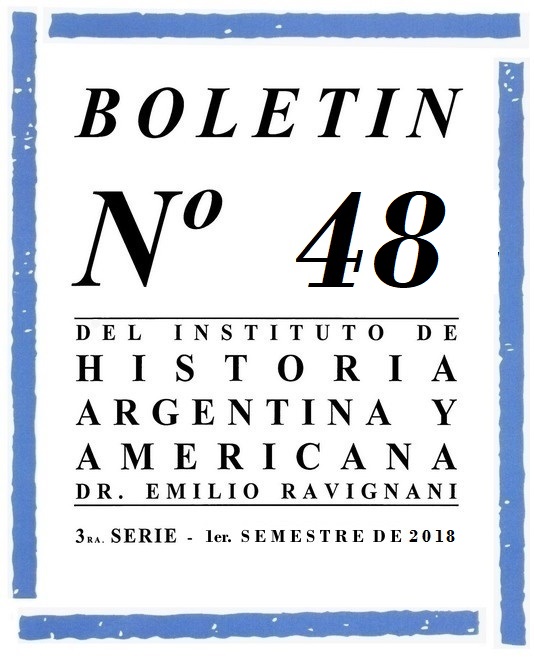La Historia Agraria en el sur de Brasil: un panorama sobre los últimos avances historiográficos
Resumen
Con eje en un amplio marco temporal que va desde fines del siglo XVIII hasta inicios del XX, en las últimas décadas los estudios sobre el mundo rural de Rio Grande do Sul ( ubicado en el extremo meridional de Brasil) experimentaron importantes avances. Se trata de un espacio particular, que compartió características propias de otras áreas de Brasil -como la importancia que tuvo la esclavitud hasta las postrimerías del siglo XIX-, pero que también tuvo semejanzas con varias provincias del Río de la Plata, sobre todo en lo referente al desarrollo de la ganadería y la instalación de colonias agrícolas con inmigrantes extranjeros. En este trabajo se presenta un panorama historiográfico de estos avances, poniendo el foco principalmente en las investigaciones sobre estructura agraria y distribución de factores productivos, sobre todo de regiones de neto corte ganadero, donde las investigaciones han avanzado con más fuerza. Además, se busca mapear el estado de las investigaciones en otras temáticas relativas a la historia rural que también se encuentran en franco y constate crecimiento, tales como las cuestiones fundiarias y las formas de trabajo rural.Descargas
Los derechos de autor son cedidos al Boletín, pero los autores podrán recuperarlos y reproducir su trabajo en otros medios o formatos mediante una solicitud por escrito al Comité Editor. En esos casos, se citará al Boletín como primera publicación del trabajo.
Las obras quedan licenciadas bajo una Licencia Creative Commons Atribución-No Comercial 4.0 Internacional, que permite a otros compartir el trabajo con un reconocimiento de su autoría y la publicación inicial en esta revista.
También, mediando solicitud por escrito al Comité Editor del Boletín, los autores pueden establecer por separado acuerdos adicionales para la distribución no exclusiva de la versión de la obra publicada en esta revista (por ejemplo, situarlo en un repositorio institucional o publicarlo en un libro), con un reconocimiento de su publicación inicial aquí. No se permiten usos comerciales.



















